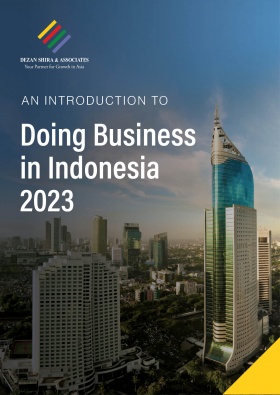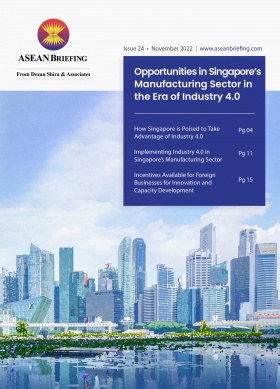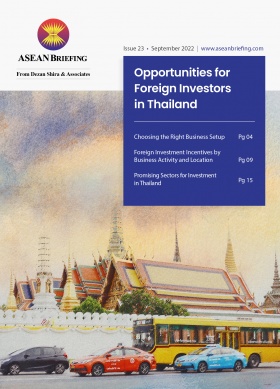ASEAN, Russia Commit to Strengthening Partnership
ASEAN and Russia have committed to strengthening their diplomatic relationship at the 19th ASEAN-Russia Senior Officials Meeting (ARSOM), which was held in the Cambodian city of Siem Reap on April 29, 2023.
The meeting reviewed the developments between ASEAN and Russia as well as Russia’s support for ASEAN Centrality, a term used by ASEAN diplomats to describe the bloc as the leader, driver, and institutional hub of regional cooperation in the wider Asia-Pacific.
ASEAN-Russia Comprehensive Plan of Action
The annual meeting noted the progress made on the ASEAN-Russia Comprehensive Plan of Action (CPA) 2021-2025, which aims to implement mutually beneficial objectives between ASEAN and Russia for the period 2021-2025.
The CPA encourages ASEAN and Russia to pursue cooperation in the below areas.
Political and security cooperation
Enhance cooperation between ASEAN and Russia through ASEAN-Russia Summits, ASEAN-Russia Senior Officials’ Meetings, ASEAN-Russia Joint Cooperation Committee, and other mechanisms for dialogue partnerships.
Economic cooperation
Continue regular meetings between ASEAN economic ministers and Russia’s minister of economic development to increase ASEAN-Russia trade and investment opportunities. Further, both jurisdictions will explore interest in enhancing trade opportunities between ASEAN and the Eurasian Economic Union (EAEU).
Energy
Energy is another important sector for cooperation. Both jurisdictions will strengthen cooperation to pursue energy security through private sector engagement, joint research collaboration, infrastructure development, and energy-efficient technologies.
Energy demand in Southeast Asia could triple by 2050 and the region could be a net importer of natural gas and coal if it does not obtain alternative energy sources.Food and agriculture
Russia and ASEAN will enhance agriculture and fisheries cooperation to develop sustainable agriculture management, expand markets for agriculture and fishery products, and promote regional food safety and security.
ASEAN and Russian trade
Trade between ASEAN and Russia reached around US$20 billion in 2021 with ASEAN exports to Russia dominating trade, reaching US$12.6 billion.
ASEAN exports were dominated by electrical machinery and equipment (US$3.4 billion), animal and vegetable oils and fats (US$1.4 billion), machinery and mechanical appliances (US$1.3 billion), and rubber (US$676 million).
Indonesia
Russia imported some US$2.6 billion worth of goods in 2021 from Indonesia. The majority came from palm oil (US$1.4 billion) in which Indonesia is the world’s largest exporter. Other major products include electrical machinery and equipment (US$173 million), rubber (US$150 million), footwear (US$140 million), and cocoa and cocoa preparations (US$112 million).
Russia’s main exports to Indonesia in 2021 were fertilizers (US$239 million), mineral fuels (US$156 million), iron and steel (US$113 million), and aluminum (US$44 million).
Indonesia and the EAEU held its first round of free trade negotiations on April 3, 2023, with the government eager to export Indonesian goods to Central Asia and Eastern Europe. At the end of 2022, trade between Indonesia and the EAEU countries increased by 58 percent compared to 2021.Malaysia
The majority of Malaysia’s exports to Russia in 2021 were for electrical machinery and equipment, which totaled an estimated US$718 million. This was followed by rubber (US$308 million), machinery and machinal appliances (US$219 million), and medical equipment (US$118 million).
Russian exports to Malaysia comprised mostly mineral fuels (US$1.1 billion), fertilizers (US$113 million), and aluminum (US$24 million).
Vietnam
Bilateral trade between Vietnam and Russia reached over US$6 billion in 2021 – an increase of 20 percent from the previous year. Vietnam exported some US$4.5 billion worth of goods to Russia during this period.
Among the key exports to Russia are electrical machinery and equipment (US$2.5 billion), footwear (US$387 million), mechanical appliances (US$342 million), and textiles and garments (US$296 million). There were also significant exports of coffee (US$217 million), fish (US$151 million), and fruits and nuts (US$83 million).
Russian exports to Vietnam were dominated by iron and steel (US$556 million) and mineral fuels (US$382 million).
Vietnam signed a free trade agreement with the EAEU in 2015 and it took effect in 2016. Trade between Vietnam and the EAEU reached US$10.4 billion in 2019 – an increase from US$3.6 billion in 2015.
Thailand
Total trade between Thailand and Russia reached an estimated US$2.2 billion in 2021, with Thailand enjoying a trade surplus of an estimated US$1.7 billion.
The country exported over US$500 million in machinery and mechanical appliances to Russia, which was followed by vehicles (US$331 million), electrical machinery (US$244 million), and rubber products (US$165 million).
Russia, meanwhile, exported an estimated US$500 million of goods to Thailand during the same period, which was dominated by mineral fuels (US$82 million), and fertilizers (US$68 million).
Like Indonesia, Thailand has also shown interest in signing a free trade agreement with the EAEU.
Cambodia
Cambodia and Russia have had diplomatic and economic relations since the Soviet era. Bilateral trade, however, is small at just over US$200 million in 2021. This was dominated by Cambodia’s exports of textiles and garments to Russia, totaling an estimated US$99 million, and footwear (US$38 million).
Meanwhile, commodities were Russia’s major export to Cambodia – totaling US$26 million, followed by mineral fuels at US$2.9 million.
Philippines
The Philippines and Russia recorded bilateral trade worth over US$1 billion in 2021. The Philippines’ exports to Russia are mostly electrical machinery and equipment (US$276 million), mechanical appliances (US$131 million), and agriculture products, mainly fruits and nuts (US$25 million).
Major Russian exports to the Philippines are iron and steel (US$313 million), pharmaceutical products (US$99 million), and articles of paper pulp (US$27 million).
The Philippines currently enjoys preferential tariff status when exporting its products to EAEU members. The country is a beneficiary of the Generalized System of Preferences (GSP) from the EAEU, of which 29 other countries are also a beneficiary.Products covered by the EAEU GSP include food, furniture, industrial goods, coffee, coconut products, sauces, and condiments.
About Us
ASEAN Briefing is produced by Dezan Shira & Associates. The firm assists foreign investors throughout Asia and maintains offices throughout ASEAN, including in Singapore, Hanoi, Ho Chi Minh City, and Da Nang in Vietnam, Munich, and Esen in Germany, Boston, and Salt Lake City in the United States, Milan, Conegliano, and Udine in Italy, in addition to Jakarta, and Batam in Indonesia. We also have partner firms in Malaysia, Bangladesh, the Philippines, and Thailand as well as our practices in China and India. Please contact us at asia@dezshira.com or visit our website at www.dezshira.com.







